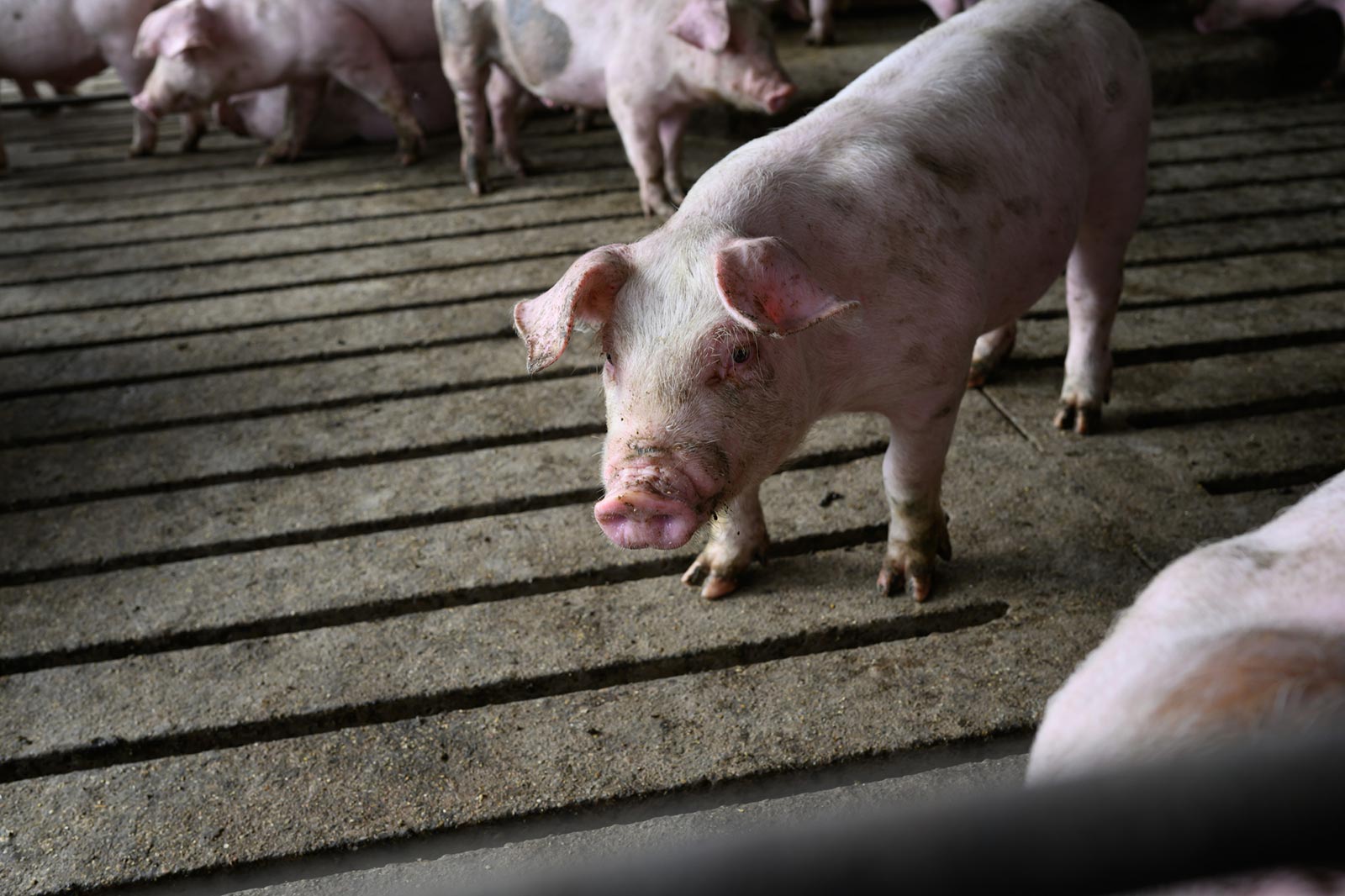Twenty-four gilts (PIC 337 x 1050; Genus, Hendersonville, TN) were utilized to evaluate nitrogen, sulfur, calcium, and phosphorus input and output on growing pigs fed varying levels of soybean meal diets. Pigs (36.77 ± 2.72 kg) were assigned to one of four dietary treatments and blocked by body weight (6 pigs/trt). Dietary treatments consisted of: 1) low SBM (LSBM) corn-soy diet supplemented with crystalline amino acids (AA) , 2) medium SBM diet (MSBM) corn-soy diet with moderate crystalline AA inclusion, 3) Enhanced soybean meal diet (ESBM) with SBM formulated to replace all synthetic lysine equal to LSBM in SID lysine , and 4) Elevated soybean meal (ESBM+) contained excess levels SBM to replace additional crystalline AA. Gilts were a subset of a study, which had three 28-d dietary phases. Treatments 1-3 were formulated to the same SID Lys:ME for the three dietary phases (3.50, 3.08 and 2.57) and treatment 4 SID Lys:ME ratio was exceeded (4.27, 3.87 and 3.44).and SBM inclusion ranged from approximately 20-50%, 15-45%, and 10-40%. Additionally, diets within each phase were isocaloric and were formulated to meet or exceed all other nutrient recommendations (NRC, 2012). Gilts were placed into metabolism stalls on D10, 38, and 66. Pigs were blocked by BW on D10. Metabolism collections consisted of 72-hour acclimation period, followed by a 24-hour total collection of manure, a secondary 24-hour acclimation period, then a 72-hour total collection for nutrient balance. Manure were analyzed for pH. Nutrient balance collections assessed ME and DE, Ca, P, S, and N balance. Digestibility data were analyzed as repeated measures in SAS 9.4 (Inst., Cary, NC) with fixed effects of treatment, phase, and block. Pig served as the experimental unit, and significance set at P ≤ 0.05. Pigs fed LSBM had the lowest pH (P < 0.0001). There were no significant differences in ATTD of DM, ash, OM, GE, N, Ca, or S across treatments (P > 0.1). Phosphorus ATTD was lower in pigs fed ESBM+ compared to LSBM(P = 0.042). LSBM diets showed higher ME:DE efficiency across treatments (P < 0.05) and CD was also higher than HSBM (P = 0.0306). A significant interaction between dietary treatment and phase was detected in N intake, urinary P output, retention of percent digestible P, S intake, urinary S output, and total S excretion, Ca intake, urinary Ca output, total Ca excretion, Ca retention g/d, and Ca retention of percent digestible Ca (P < 0.05), indicating phase-dependent effects. Retention of percent intake of N was greatest in LP diets compared to all other treatments, and greater in P and S compared to ESBM+ (P < 0.05). Overall, pigs fed MSBM diets had similar nutrient utilization and excretion compared to ESBM and ESBM+ diets.
Wileman, C., S. Craig, S. Trabue and L. Greiner. 2025. Nitrogen, sulfur, calcium, and phosphorus input and output on growing pigs fed varying levels of soybean meal diets. 2025 American Society of Animal Science Midwest Section meeting, Abstract 101.
